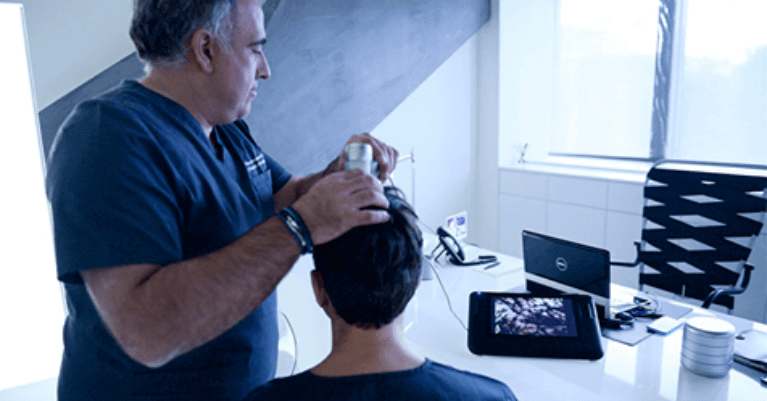Locating hair loss is an issue that the person concerned is called upon to address immediately in a proper scientific manner.
The recommended method is trichoscopy. This is the only scientific procedure that concerns the diagnosis of scalp diseases.
Trichoscopy is the dermatoscopy of the hair and scalp using a dermatoscope or a polarized light video microscope.
In this way the doctor has the possibility to observe in detail the loss of follicular openings, microfollicles and/or multiple hairs, from at least six hairs or more.
If no loss of follicular orifices can be observed in the area of hair loss, then the resulting diagnosis is non-scarring alopecia.
In the category of non-scarring alopecia, alopecia areata is more common and should be primarily considered in the differential diagnosis.
In this case, the first control points are yellow dots, black dots or broken hairs.
The hallmark feature of androgenetic alopecia and hirsutism is disparity in hair diameter (≥20%) and small broken comma hairs respectively.
During the trichoscopy process, the following are recorded:
- The number of hair follicles and the number of hairs.
- The number of individual hair follicles and damage to the blood vessels around the hair follicles.
- The thickness of the hair, but also the damage to the shaft, the root of the hair and the skin.
The information collected by the dermatologist contributes decisively to the identification of the causes of hair loss and helps in the treatment to be followed by the person concerned.
Trichoscopy is necessary as the number and diversity of factors that cause hair loss make it necessary for the diagnosis that will then lead to the appropriate treatment.
With trichoscopy, the interested party can – in many cases – avoid the skin biopsy which – may – be necessary for the exact diagnosis of the problem. But in addition to diagnosis, it can be a useful tool in monitoring the results of any form of treatment one follows.
It is also useful on another level as it can act as a measure of comparison and assessment of the effectiveness or not of the treatment applied to the hair. That is, in the event that the FUE hair transplant technique is used, trichoscopy can be performed in the recipient and donor areas, so that it is possible to count the hair follicles that have been transferred from one area to the other and to establish whether and to what extent there were loss of hair follicles. It is a harmless, painless examination that can be repeated every 3 or 6 months at the doctor’s office.
It is clear that a study of the scalp before applying any treatment is necessary to determine the extent of the problem and the appropriate treatment to be given.
Trichoscopy also helps to maintain an electronic file that can be used at any time, so that both the doctor and the patient concerned have a clear picture of the progression of hair loss and the degree of effectiveness of any treatment.



